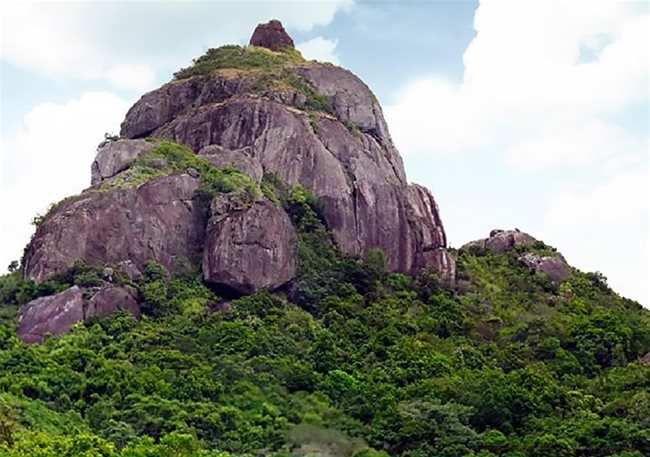The central province of Binh Dinh used to be the capital of the Champa kingdom (998-1471). Until now, some remnants of the kingdom’s towers, which represent the culture of the ancient empire, are still seen in the province. Among these is Hon Chuong tower, one that has been long lost for more than five centuries.

Hon Chuong Tower on Ba Mountain
Hon Chuong Tower, also known as Hon Ba or Ba Chang, is on the peak of Ba Mountain, over 720 meters above sea level. The mountain is in Cat Tai Commune in Phu Cat District, around 50 kilometers from Quy Nhon, a key city in Binh Dinh.
How Hon Chuong was built remains a mystery
In the late 19th century and early 20th century, Henri Parmentier, a French researcher and architecture, conducted surveys and collected statistics to make a map of nearly all Champa towers. However, for certain unknown reasons, he missed Hon Chuong Tower.
Decades later, Vietnamese scholars undertook research on Champa towers and other cultural relics in the area. Yet, again, they failed to trace Hon Chuong Tower, perhaps because of its remote location.
The tower was built on a giant rock, about 49 meters high, which has the shape of an upturned bell. It is also unclear that why there is no direct access to the tower from the foot of the huge stone. The sides of the square tower each are four meters in length. The tower’s entrance is to the east. This is also the only opening of the tower while the other sides are closed off.
As the top of tower has collapsed, its remaining body is only five meters high now. The inside of the tower is currently filled with fallen bricks. Many earthenware objects were found at the foot of the tower.
The path to Hon Chuong is so rough that it takes trekkers from three to four hours to reach the foot if they depart from Chanh Danh Hamlet in Cat Tai Commune, which is the shortest distance. Given the steep and rugged terrain, it is a mystery that how Cham people transported materials to the site to build the tower.
It is still a harsh challenge for those who want to climb up the tower. The only way is experienced climbers getting to the top first and then dropping ropes down so that others could cling to and climb up. However, if adventurers succeed in climbing to the top, the tower which has no access point will provide a panoramic view of Binh Dinh Province. Before their eyes are De Gi and Thi Nai lagoons in the east, the Truong Son Range in the west and La Tinh River and Con River deltas stretching from north to south.
Hon Chuong’s architecture
Among the four walls of Hon Chuong Tower which are now almost ruined, the wall to the east remains almost intact. During their days, ancient Champa people must have used a very special technique in building their towers. Bricks were arranged unevenly to form walls. The technique was also applied to building Hon Chuong Tower.

A closer look of Hon Chuong Tower
Considering the location as well as the differences from other Champa towers, Hon Chuong is believed to have played a military role rather than religious purposes. Some researchers believe that the tower was built in the 11th century.
Hon Chuong Tower can be said to be a symbol of Champa’s architectural heritages. To unearth the secrets of this long lost tower, thorough examinations and in-depth analyses are required.
By Tran Quang Duy